SAP Workforce Planning
Filter By
Browse By
- SAP Analytics and AI
- SAP Application Development and Integration
- All SAP Application Development and Integration
- SAP ABAP
- SAP ABAP Development Tools
- SAP ABAP Test Cockpit
- SAP API Management
- SAP BAPI
- SAP Basis
- SAP BRF
- SAP Business Application Studio
- SAP CMS
- SAP Design Studio
- SAP Development Tools
- SAP DevOps
- SAP EAI
- SAP EDI
- SAP Extension Suite
- SAP Fiori
- SAP Fiori Elements
- SAP Integration Suite
- SAP Low Code Application Development
- SAP Low Code Automation
- SAP Netweaver
- SAP Release Management
- SAP UI5
- SAP Web Application Server
- SAP Web IDE
- SAP Business Process Management
- SAP Center of Excellence
- SAP CIO
- SAP Customer Experience
- SAP Data and Data Management
- All SAP Data and Data Management
- SAP BW
- SAP BW/4HANA
- SAP Crystal Reporting
- SAP Data Archiving
- SAP Data Center
- SAP Data Governance
- SAP Data Integration
- SAP Data Migration
- SAP Data Quality
- SAP Data Services
- SAP Data Strategy
- SAP Data Visualization
- SAP Data Warehouse Cloud
- SAP DMS
- SAP Document Control
- SAP EIM
- SAP ETL
- SAP ETL Tools
- SAP HANA
- SAP HANA Administration
- SAP HANA Deployment Infrastructure
- SAP HANA Studio
- SAP Master Data
- SAP Master Data Governance
- SAP MDM
- SAP Enterprise Architect
- SAP Enterprise Asset Management
- SAP ERP
- SAP Finance
- All SAP Finance
- SAP Accounting
- SAP AR AP
- SAP Asset Accounting
- SAP Billing Systems
- SAP BPC
- SAP BRIM
- SAP Cash Management
- SAP Central Finance
- SAP Controlling
- SAP COPA
- SAP Cost Center Accounting
- SAP e-invoicing
- SAP FICO
- SAP Finance Automation
- SAP Financial Closing Cockpit
- SAP Financial Consolidation
- SAP Financial Planning
- SAP FX Risk
- SAP General Ledger
- SAP Global Tax Management
- SAP Hyperion
- SAP Order to Cash
- SAP Payment Processing
- SAP Profitability Analysis
- SAP Rebate Management
- SAP S/4HANA Finance
- SAP Universal Journal
- SAP Governance Risk and Compliance
- SAP Human Capital Management
- SAP Intelligent Technologies
- SAP Platform and Technology
- All SAP Platform and Technology
- SAP Business Technology Platform
- SAP Cloud Connector
- SAP Cloud Integration Platform
- SAP Cloud Migration
- SAP Cloud Platform
- SAP Cloud Providers
- SAP Cloud Strategy
- SAP Container Platform
- SAP Digital Asset Management
- SAP Digital Integration Hub
- SAP Digital Signature
- SAP HANA Enterprise Cloud
- SAP HEC
- SAP Hyperscalers
- SAP Infrastructure
- SAP Messaging
- SAP Smart Forms
- SAP Quality and Testing
- SAP Security
- SAP Spend Management
- SAP Supply Chain Management
- All SAP Supply Chain Management
- SAP APO
- SAP Asset Management
- SAP Business Network
- SAP Digital Manufacturing Cloud
- SAP Digital Twin
- SAP EWM
- SAP IBP
- SAP Inventory Management
- SAP Label Printing
- SAP Logistics
- SAP Manufacturing
- SAP Manufacturing Automation
- SAP MES
- SAP MII
- SAP MM
- SAP MRO
- SAP MRP
- SAP Order Management
- SAP Plant Maintenance
- SAP PLM
- SAP Production Planning
- SAP S&OP
- SAP SD
- SAP SPM
- SAP Supply Chain Planning
- SAP Track and Trace
- SAP Transportation Management
- SAP System Administration
What Is SAP Workforce Planning?
Companies that want to better anticipate staffing needs — be they through organizational change, growth, or seasonal impact — use workforce planning. The process of workforce planning brings a data-driven approach to forecasting workforce requirements and strives to ensure a company is optimizing its hiring and training. Technology also plays a role in workforce planning, and SAP Workforce Planning is offered in the cloud-based SAP SuccessFactors Workforce Planning module.
Good workforce planning typically includes analysis of the following:
- Available talent
- Forecasted talent needs
- Gaps between what is forecasted and what is available
- Determination of how to fill talent gaps.
Filling talent gaps goes beyond simply hiring full-time workers. It can also include part-time or seasonal labor or contract work. The solution to workforce deficits may be inside the company already and achieved through training and promotion from within.
SAP Workforce Planning with SAP SuccessFactors Workforce Planning is one option for SAP customers, but it’s not the only option available. For example, vendors such as Alight offer pre-packaged workforce planning solutions. SAP partners like IBM and Accenture help companies implement workforce planning processes and technologies.
What Is SAP Workforce Planning?
Companies that want to better anticipate staffing needs — be they through organizational change, growth, or seasonal impact — use workforce planning. The process of workforce planning brings a data-driven approach to forecasting workforce requirements and strives to ensure a company is optimizing its hiring and training. Technology also plays a role in workforce planning, and SAP Workforce Planning is offered in the cloud-based SAP SuccessFactors Workforce Planning module.
Good workforce planning typically includes analysis of the following:
- Available talent
- Forecasted talent needs
- Gaps between what is forecasted and what is available
- Determination of how to fill talent gaps.
Filling talent gaps goes beyond simply hiring full-time workers. It can also include part-time or seasonal labor or contract work. The solution to workforce deficits may be inside the company already and achieved through training and promotion from within.
SAP Workforce Planning with SAP SuccessFactors Workforce Planning is one option for SAP customers, but it’s not the only option available. For example, vendors such as Alight offer pre-packaged workforce planning solutions. SAP partners like IBM and Accenture help companies implement workforce planning processes and technologies.
Key Considerations for SAP Workforce Planning
- Data-driven workforce planning is still a strategic advantage. While it may seem like every company is engaging in HR best practices that include workforce planning, the truth is workforce planning and analytics tools are among the lowest adoption of HR software types, according to data from our recent HR technology research. Implementing a workforce planning process can give your organization a competitive edge.
- Bring HR together with finance and the business for workforce planning. Workforce planning is at its best when all relevant sources of insight and information are brought to the table. Finance can provide critical data on budget and forecasted company performance. Business executives drive the direction of the organization that will ultimately create staffing needs. Combine business and finance with HR’s insight for the best workforce planning outcomes.
- Define your workforce planning requirements. Determining the goals of your workforce planning program before undertaking the actual analysis will help drive more effective results. Figure out which departments and skill sets are most likely to need planning assistance. Additionally, identify specific time frames for planning — are you looking at the next year or beyond?
1285 results
-

Optimize BW’s Data Modeling Capabilities with BPS
Published: 01/April/2006
Reading time: 18 mins
Make the jump from reporting in BW to planning and data modeling using BW’s Business Planning and Simulation (BW-BPS). See how the InfoCubes, attributes, calculated key figures, and dimensions for planning differ from those you use in reporting. Get valuable tips about properly structuring your planning InfoCubes. Key Concept A characteristic is an object that...…
-

Enhance R/3’s Product Allocation Tool by Integrating It with APO’s DP and GATP Modules
Published: 15/May/2004
Reading time: 26 mins
SAP R/3 and Advanced Planner and Optimizer (APO) provide several different ways to manage planning hierarchies for product allocation purposes, each with benefits and drawbacks. The author shows how to optimize product allocation in R/3 and presents examples of how R/3 integrates with APO’s Demand Planning (DP) and Global Available to Promise (GATP). Both SAP...…
-

Supply Network Planning: Aggregated Planning Eliminates Aggravated Planners
Published: 01/October/2004
Reading time: 16 mins
Creating planning processes is extremely complicated. Planners must accommodate an almost endless list of demands and they run the risk of being overwhelmed by minutia. SAP Advanced Planning and Optimization (APO) offers the technology to consolidate large volumes of data so that planners can have more control as they approach the task. Key Concept Hierarchies...…
-
-

Efficient Production Planning Using SKU Groups with the SNP Optimizer
Published: 01/May/2014
Reading time: 31 mins
SCMFind out how to overcome the limitations of Supply Network Planning’s aggregate and block planning capabilities. Key Concept Aggregate planning is a feature in Supply Network Planning (SNP) whereby net requirements calculation from medium to long term can be executed at a product group level using aggregate objects such as SKU groups, location groups, resource...…
-

SAP Integrated Business Planning for Sales and Operations: Q&A on How to Optimize Demand and Supply Planning and Increase Profitability
Published: 01/April/2016
Reading time: 24 mins
When it comes to your supply chain, accuracy, efficiency, swift and informed decision making, and timely responses and adjustments to market and business changes are critical — but a lack of communication between sales, marketing, finance, and operations can be a significant impediment to these goals. The ability to effectively and simultaneously evaluate data from…
-

7 Steps to Configure Fiscal Weeks Right the First Time in SAP APO
Published: 23/July/2009
Reading time: 13 mins
Learn how to avoid common errors in defining fiscal weeks when creating them in SAP ERP Central Component and then importing them to SAP Advanced Planning & Optimization. Examine the touch points of using the time bucket of fiscal week for the planning area, planning books, and supply network planning. Key Concept You can carry...…
-

Enhance SAP CRM Planning and Analysis with BPS
Published: 15/April/2007
Reading time: 10 mins
Strategic Enterprise Management — Business Planning and Simulation (SEM-BPS) provides flexible capabilities that gain functionality through the SAP CRM planning services configuration. Obtain an understanding of the configuration options that SEM-BPS offers for SAP CRM integrated planning with Marketing Planner. Key Concept Strategic Enterprise Management — Business Planning and Simulation (SEM-BPS) is a toolset that...…
-
-

SAP Service Parts Planning Fine-Tunes After-Sales Business
Published: 30/April/2009
Reading time: 75 mins
See a summary of how the planning process works in Service Parts Planning from a functional viewpoint. Get a functional description of the standard planning process steps and the corresponding planning services offered by Service Parts Planning. Key Concept Service Parts Planning was introduced as a component of service parts management with SAP SCM 5.0...…
-

Exploit Demand Planning to Forecast Dependent Requirements in SAP APO
Published: 20/October/2015
Reading time: 12 mins
Learn the process flow of an SAP Advanced Planning and Optimization (APO) forecast with bills of material (BOM). Follow a step-by-step procedure to release a forecast and interpret the results. Key Concept Demand Planning (DP) in SAP Advanced Planning and Optimization (SAP APO) helps to generate forecasts based on historical values. Forecasting is generally done...…
-

Maintain Data Integrity by Implementing Profit Center Planning in the New General Ledger
Published: 15/April/2008
Reading time: 8 mins
Find out how to implement profit center planning in the new General Ledger and how to transfer planning data from Cost Center Accounting and Profitability Analysis to profit centers. Key Concept For SAP ERP 5.0 and 6.0, SAP integrated Profit Center Accounting into the new General Ledger (new G/L), so the profit center planning functionality...…
Featured Experts
Become a Member
Unlimited access to thousands of resources for SAP-specific expertise that can only be found here.
Upcoming Events
Related Vendors
Your request has been successfully sent



